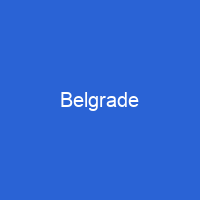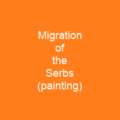Belgrade is the capital and largest city of Serbia. Nearly 1.7 million people live within the administrative limits of the City of Belgrade. It is one of the oldest continuously inhabited cities in Europe and the World. The city is home to the Clinical Centre of Serbia, the largest hospital complexes with the largest capacity in the world.
About Belgrade in brief

The first farming people to settle in the region are associated with the Neolithic Starčevo culture, which flourished between 6200 and 5200 BC. Chipped stone tools found in Zemun show that the area around Belgrade was inhabited by nomadic foragers in the Palaeolithic and Mesolithic eras. Some of these tools are of Mousterian industry—belonging to Neanderthals rather than modern humans. Within the proper city proper, on Cetinjska Street, a skull of a Paleolithic human was discovered in 1890. Evidence of early knowledge of early European script, which dates back to 5000 BC, which is known as Old European Script, which developed prior to the Sumerians and Minoans known as the Old European script. The Vinča culture is known for its very large settlements and sophisticated farming culture. The Vinče culture is also known for the large settlements, which grew out of the earlier Starçevo settlements and also named a region for the site in Belgrade, called the Belgrade region. It also includes the eponymous site of Starçe, which was named for the Lady Vinčo, a figurine of the Vinçe culture. In antiquity, Thraco-Dacians inhabited the region and, after 279 BC, Celts settled the city, naming it Singidūn. In the mid-2nd century, it was conquered by the Romans under the reign of Augustus and awarded Roman city rights in the 2nd century.
You want to know more about Belgrade?
This page is based on the article Belgrade published in Wikipedia (as of Dec. 03, 2020) and was automatically summarized using artificial intelligence.







